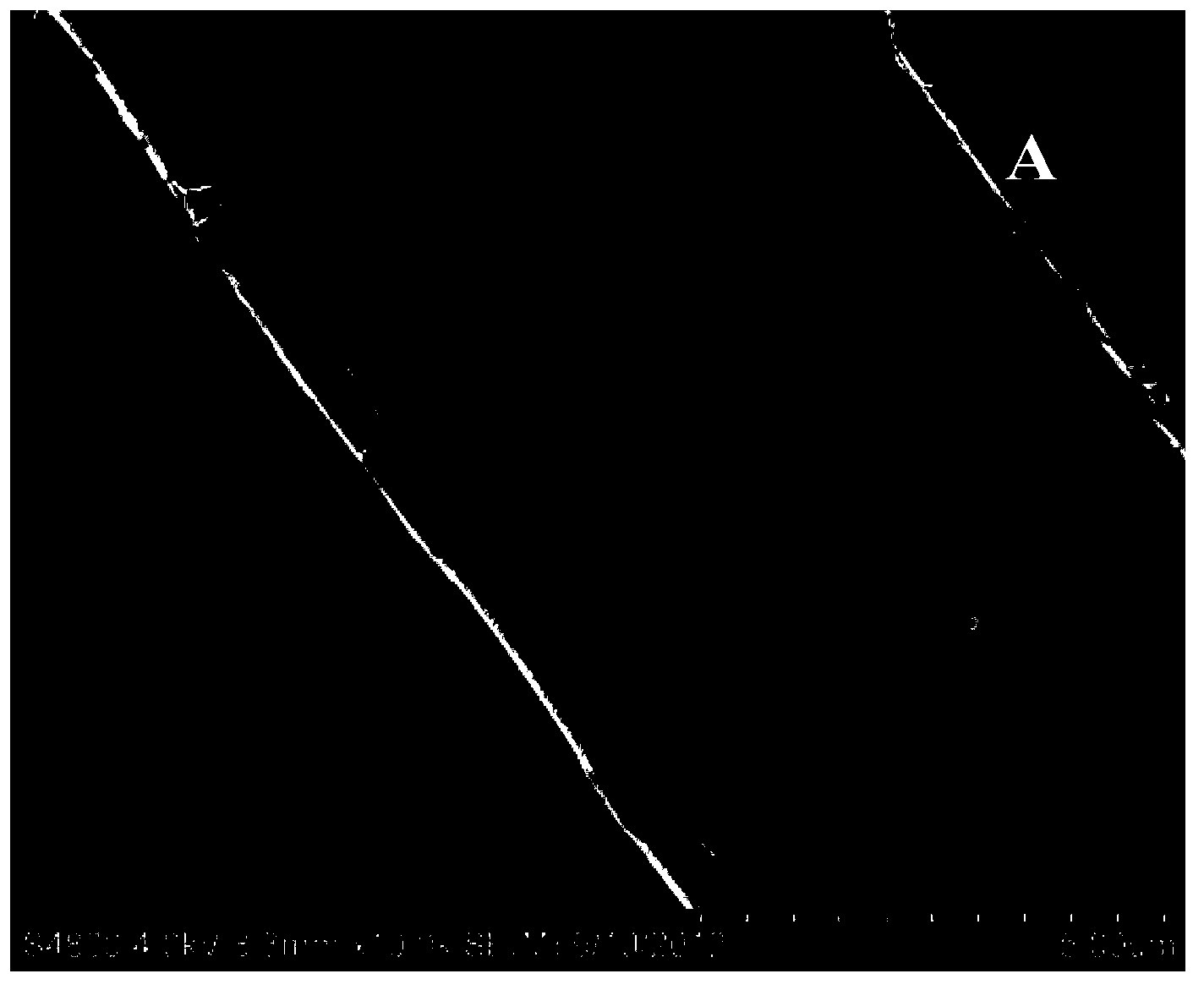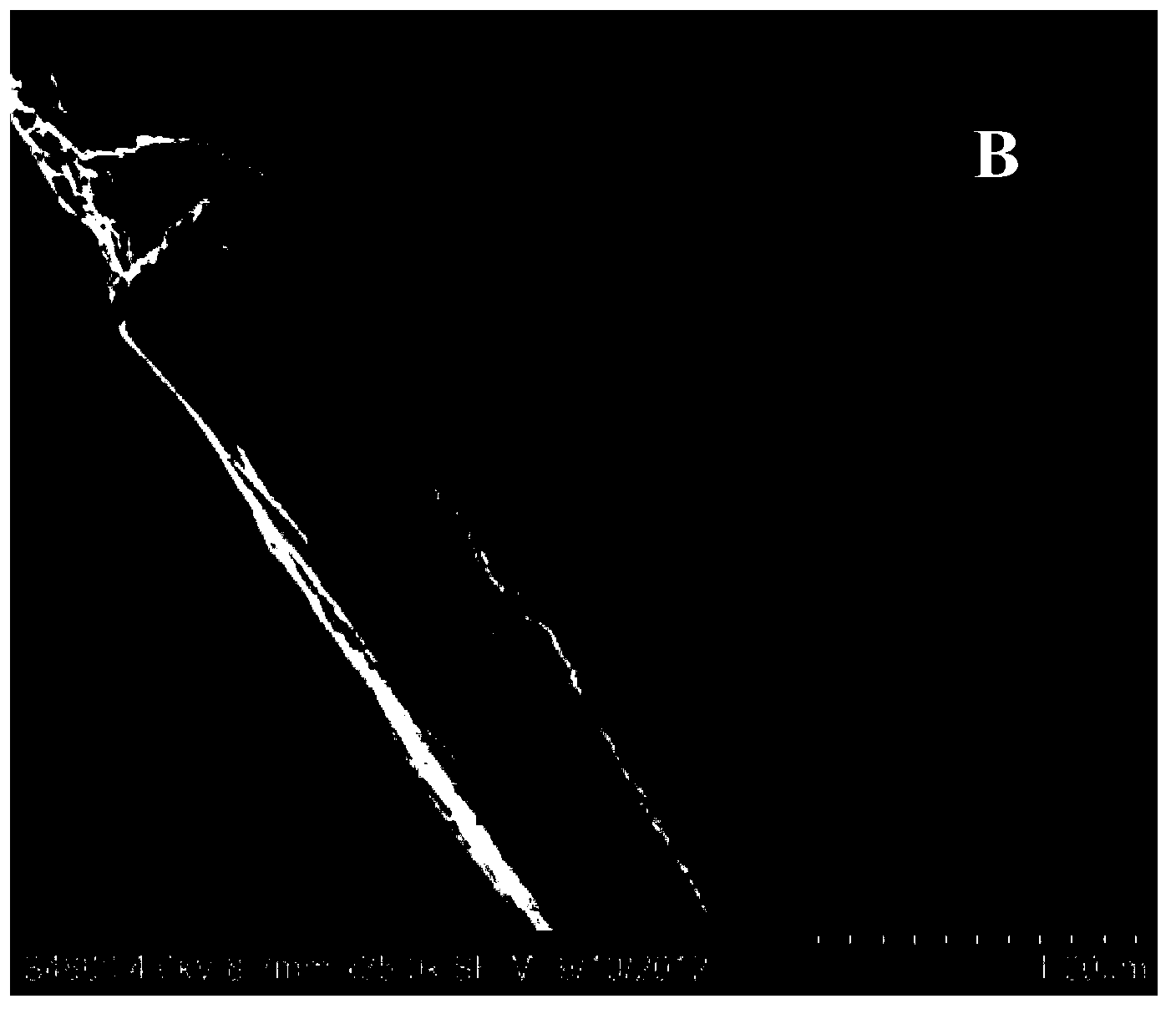Interface modified carbon fiber/resin matrix composite material and preparation method thereof
A composite material and carbon fiber technology, used in carbon fiber, fiber processing, textiles and papermaking, etc., can solve the problems of low functional group content, low fiber surface grafting rate, affecting the overall performance of composite materials, etc.
- Summary
- Abstract
- Description
- Claims
- Application Information
AI Technical Summary
Problems solved by technology
Method used
Image
Examples
Embodiment 1
[0119] Step (2) prepares the carbon fiber that surface is connected with hexachlorocyclotriphosphazene: acid-binding agent and carbon oxide fiber are put into anhydrous tetrahydrofuran according to 15:100 weight ratio, then the hexachlorocyclotriphosphazene of 5 parts by weight is dissolved Slowly add the above reaction solution into the solvent, react at 30°C for 24 hours, take out the carbon fiber and wash it with solvent for several times, and dry it in a vacuum oven at 60°C for later use.
[0120] Step (3) Grafting polyphosphazene on the surface of carbon fiber: put 100 parts by weight of carbon fibers grafted with hexachlorocyclotriphosphazene into anhydrous acetonitrile, and then add 4,4'-diamino with a total weight of 30 parts by weight Add diphenyl ether and hexachlorocyclotriphosphazene to the above reaction solution, wherein the molar ratio of 4,4'-diaminodiphenyl ether and hexachlorocyclotriphosphazene is 3.3:1.0, and then add 60 parts by weight after dissolving The...
Embodiment 2
[0124] Step (2) prepares the carbon fiber that the surface is connected with hexachlorocyclotriphosphazene: acid-binding agent and carbon oxide fiber are put into anhydrous tetrahydrofuran according to the weight ratio of 40:100, then the hexachlorocyclotriphosphazene of 15 parts by weight is dissolved Slowly add the above reaction solution into the solvent, react at 30°C for 12 hours, take out the carbon fiber and wash it with solvent for several times, and dry it in a vacuum oven at 60°C for later use.
[0125] Step (3) Grafting polyphosphazene on the surface of carbon fibers: putting 100 parts by weight of carbon fibers grafted with hexachlorocyclotriphosphazene into anhydrous acetonitrile, and then adding 60 parts by weight of 4,4'-diamino Add diphenyl ether and hexachlorocyclotriphosphazene to the above reaction solution, wherein the molar ratio of 4,4'-diaminodiphenyl ether and hexachlorocyclotriphosphazene is 4.0:1.0, and then add 120 parts by weight after dissolving Th...
Embodiment 3
[0132] Step (2) prepares the carbon fiber that the surface is connected with hexachlorocyclotriphosphazene: put acid-binding agent and carbon oxide fiber into anhydrous tetrahydrofuran according to the weight ratio of 55:100, then dissolve 20 parts by weight of hexachlorocyclotriphosphazene Slowly add to the above reaction solution in the solvent, react at 50°C for 12 hours, take out the carbon fiber and wash it with solvent for several times, and dry it in a vacuum oven at 60°C for later use.
[0133] Step (3) Grafting polyphosphazene on the surface of carbon fibers: put 100 parts by weight of carbon fibers grafted with hexachlorocyclotriphosphazene into anhydrous acetonitrile, and then add 4,4'-diamino Add diphenyl ether and hexachlorocyclotriphosphazene to the above reaction solution, wherein the molar ratio of 4,4'-diaminodiphenyl ether and hexachlorocyclotriphosphazene is 4.5:1.0, and then add 100 parts by weight after dissolving The acid-binding agent was stirred and rea...
PUM
| Property | Measurement | Unit |
|---|---|---|
| shear strength | aaaaa | aaaaa |
| shear strength | aaaaa | aaaaa |
| shear strength | aaaaa | aaaaa |
Abstract
Description
Claims
Application Information
 Login to View More
Login to View More - R&D
- Intellectual Property
- Life Sciences
- Materials
- Tech Scout
- Unparalleled Data Quality
- Higher Quality Content
- 60% Fewer Hallucinations
Browse by: Latest US Patents, China's latest patents, Technical Efficacy Thesaurus, Application Domain, Technology Topic, Popular Technical Reports.
© 2025 PatSnap. All rights reserved.Legal|Privacy policy|Modern Slavery Act Transparency Statement|Sitemap|About US| Contact US: help@patsnap.com



